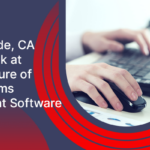How Claim Management Companies Can Enhance Their Practices
October 18, 2024
In the dynamic landscape of insurance, the evolution of risk assessment has witnessed a transformative journey from raw data to intelligent decision-making. From the era of Big Data to the present age of smart decisions, the process has undergone a remarkable shift. Initially reliant on vast amounts of data, insurers now leverage advanced technologies to extract meaningful insights. This evolution signifies more than just a technological upgrade; it marks a fundamental change in how insurers understand and manage risks.
Today, the insurance industry stands at the forefront of a paradigm shift, utilizing smart decision-making tools powered by sophisticated analytics. This not only enhances the precision of risk assessment but also ensures a more responsive and tailored approach to each policyholder. As we delve into the nuances of this evolutionary journey, the fusion of technology and insurance expertise becomes increasingly evident, reshaping the way risks are evaluated and policies are crafted. Join us on this exploration of the Evolution of Risk Assessment – where data meets intelligence for a smarter and more secure future in insurance.
I. The Big Data Revolution
Defining Big Data in Insurance
Big data in insurance involves managing extensive structured and unstructured data from various sources like customer interactions, claims history, and social media. While the challenge is efficiently handling this massive volume, the potential benefits are significant. Insurers can use big data analytics to gain insights into customer behavior, enhance risk assessment, and streamline underwriting and claims processes. This enables personalized offerings, precise risk assessments, and operational efficiencies. By making data-driven decisions, insurers improve customer satisfaction and stay competitive in a technologically driven industry. In essence, big data transforms insurance by turning challenges into strategic opportunities for innovation and improvement.
Challenges in Traditional Risk Assessment
Traditional risk assessment methods often relied on historical data and statistical models, leading to limited insights and occasional inaccuracies. The need for a more nuanced understanding of risks prompted the exploration of big data analytics.
The Role of Big Data in Risk Mitigation
Big data analytics revolutionized risk assessment by enabling insurers to analyze large datasets in real time. This proactive approach allowed for more accurate predictions, early identification of potential risks, and a more personalized approach to underwriting.
II. The Integration of Claims Software
Claims Software as a Catalyst
Claims software has emerged as a pivotal catalyst in the evolution of risk assessment within the insurance industry. Serving as a fundamental component, it plays a crucial role in streamlining the claims process. By offering insurers a centralized platform, claims software facilitates the efficient management and analysis of claim-related data.
This technology enhances the overall efficiency of the claims workflow, from the initial reporting of a claim to its resolution. Insurers can leverage claims software to automate and optimize various tasks, reducing manual efforts and minimizing the risk of errors. The centralized nature of the platform ensures seamless collaboration among different stakeholders involved in the claims process, leading to quicker decision-making and improved customer experiences. In essence, claims software acts as a linchpin, not only in expediting claims handling but also in contributing to the broader enhancement of risk assessment practices within the insurance sector.
Enhanced Data Processing
Advanced claims software revolutionizes the insurance industry with its robust data processing capabilities. Going beyond basic functions, this software employs machine learning algorithms and artificial intelligence to extract profound insights from claims data, offering a nuanced understanding of risk factors. Analyzing extensive historical claims data enhances risk assessment accuracy, identifies patterns, and predicts potential future risks. Artificial intelligence automates decision-making, expediting claims handling and reducing human errors. In essence, the integration of machine learning and AI in claims software not only streamlines processing but also empowers insurers with actionable intelligence, transforming risk assessment and ensuring competitiveness in the dynamic insurance landscape.
III. The Impact on Underwriting
Precision Underwriting
The integration of big data analytics and claims software has enabled insurers to move from broad risk categorizations to precision underwriting. Insurers can now assess risks with a higher degree of granularity, tailoring coverage and pricing to individual policyholders.
Real-Time Risk Assessment
Claims software, powered by big data analytics, allows for real-time risk assessment. Insurers can continuously monitor and adjust their risk models based on evolving trends and emerging patterns, ensuring a more adaptive and responsive approach to underwriting.
IV. Fraud Detection and Prevention
Proactive Fraud Mitigation
Claims software equipped with advanced analytics is a powerful tool in detecting and preventing insurance fraud. Machine learning algorithms can identify suspicious patterns and behaviors, helping insurers take preemptive action to mitigate fraudulent activities.
Cost Savings through Fraud Prevention
By leveraging claims software to detect fraud early in the process, insurers can not only minimize financial losses but also reduce the administrative burden associated with investigating and processing fraudulent claims.
V. Improving Customer Experience
Streamlined Claims Processing
Claims software plays a pivotal role in expediting the claims process, leading to faster settlements and improved customer satisfaction. This efficiency is a critical factor in retaining policyholders and attracting new customers.
Personalized Offerings
The insights derived from big data analytics enable insurers to tailor their offerings to individual customer needs. This personalized approach enhances customer engagement and loyalty, contributing to long-term business success.
VI. The Future Landscape
Artificial Intelligence and Predictive Modeling
AI and predictive modeling are revolutionizing risk assessment in insurance, reshaping decision-making. AI’s analytical prowess and pattern recognition enable precise risk prediction, evolving traditional models. Machine learning processes historical data, identifies trends, and ensures a dynamic, adaptive risk approach. Predictive modeling, utilizing statistical algorithms, enhances accuracy, tailors coverage, and optimizes underwriting. This fusion boosts operational efficiency, automating routine tasks and focusing human expertise where valuable. A customer-centric shift occurs through personalized risk assessments, offering tailored coverage and pricing, enhancing satisfaction, and fostering loyalty. The future of risk assessment lies in the seamless integration and advancement of AI and predictive modeling, elevating the insurance industry’s capabilities.
Blockchain Technology
Blockchain is revolutionizing insurance by providing a secure and transparent framework. Its immutable nature ensures tamper-proof records, reducing fraud and unauthorized alterations. The transparency of blockchain creates a shared ledger, fostering trust among stakeholders and minimizing disputes. Its decentralized design makes fraud prevention robust, with smart contracts automating and enforcing agreements. Implementing blockchain streamlines administrative processes, cuts paperwork, and reduces reconciliation efforts, leading to cost savings for insurers and competitive pricing for policyholders. The transformative potential of blockchain lies in enhancing security, transparency, and efficiency, reshaping the way insurance data is managed, and creating a more trustworthy industry landscape.
Conclusion
The transformation of risk assessment in the insurance sector, from using large amounts of data to making intelligent judgments, signifies a fundamental change in the way things are done. The use of claims software, which incorporates sophisticated analytics, has emerged as the primary catalyst for this shift. It enables insurance companies to make well-informed choices, enhance risk management, and provide an unmatched level of service to policyholders. As we anticipate the future, the incorporation of developing technologies will persistently reinvent how insurers evaluate and control risks, guaranteeing a flexible and robust insurance environment for the foreseeable future.
7 Features Every Online Claim Management System Needs
June 27, 2024What to Look for in Claims Management Software?
May 8, 2024









